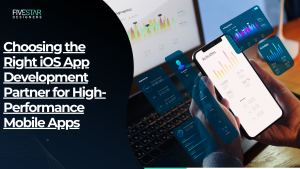Flutter, an open-source mobile app development framework developed by Google, has gained significant popularity among developers due to its ability to create cross-platform mobile applications for Android and iOS platforms using a single codebase. However, as with any technology, Flutter App development has pros and cons, making weighing the benefits and drawbacks essential before deciding whether to use it for your next app project.
This blog post will delve into the advantages and disadvantages of developing applications using Flutter and the best practices for building top-notch applications using the framework.
Advantages of Flutter for App Development
Fast Development Time
Flutter’s fast development time is one of its most significant advantages. Since Flutter uses a single codebase for Android and iOS platforms, developers can write code once and use it across multiple platforms. This eliminates the need for separate codebases for each platform, significantly reducing development time and effort.
Hot Reload
The hot reload feature in Flutter enables developers to make real-time changes to the code and see the results instantly without the need to restart the application. This feature makes the development process faster and more efficient.
Excellent Performance
Flutter applications are known for their excellent performance. Since Flutter compiles the code into native machine code, the resulting applications are fast and responsive. This makes Flutter a great choice for developing high-performance applications.
Beautiful User Interface
Flutter offers a broad range of customizable widgets that empower developers to design stunning and interactive user interfaces. Flutter’s widgets are designed to work seamlessly across multiple platforms, ensuring a consistent user experience.
Access to Native Features
Developers can effortlessly integrate platform-specific functionalities into their applications using Flutter, thanks to its effortless access to native features and APIs. This means that developers can leverage the power of the underlying platform without compromising on the cross-platform nature of the application.
Disadvantages of Flutter for App Development
Learning Curve
Flutter has a steep learning curve, especially for developers unfamiliar with Dart, the programming language used by Flutter. This can result in a longer development time and higher development costs.
Limited Libraries and Tools
While Flutter provides a rich set of widgets and APIs, the available libraries and tools are limited compared to other platforms. Finding the right tools for specific use cases can make it challenging.
Large App Size
Flutter applications tend to have a larger app size than native applications, which can be problematic for users with limited storage space.
Limited Native Look and Feel
Flutter’s widgets are highly customizable but may not provide the same native look and feel as the underlying platform. This can result in a less cohesive user experience for users who are used to the native look and feel.
Best Practices for Flutter Development
Follow the Flutter Architecture
The Flutter Architecture Pattern has its own architecture, which developers should follow when developing applications. This architecture helps build scalable and maintainable code, making adding new features easier and maintaining the application in the long run.
Use State Management Libraries
State management is a crucial part of Flutter development, and several state management libraries are available, such as Provider, Bloc, and MobX. These libraries can simplify the state management process and make the application more scalable and maintainable.
Optimize App Performance
To optimize app performance, developers should follow best practices such as reducing the size of the app, minimizing the use of external dependencies, and optimizing animations and transitions. Optimizing app performance is essential for ensuring a smooth user experience and retaining users.
Test Your App
Testing is an essential part of Flutter development, and developers should test their applications thoroughly to ensure that they are bug-free and provide a great user experience. Several testing frameworks are available for Flutter, such as Flutter Driver and Flutter Test.
Keep Up with Updates
Flutter is a rapidly evolving framework, and developers should keep up with updates and new releases to take advantage of new features and performance improvements. Regularly updating the framework ensures that the application remains compatible with the latest Android and iOS.
Is Flutter Good for App Development?
Despite its disadvantages, Flutter is an excellent choice for app development, especially for startups and small businesses. Flutter applications’ fast development time and excellent performance make it an attractive option for businesses looking to launch their applications quickly and efficiently.
Flutter’s cross-platform nature also means businesses can save time and money by developing a single codebase that works across multiple platforms. This is especially beneficial for businesses with limited resources, as they can avoid the additional costs of developing separate codebases for each platform.
Flutter Development: Balancing the Pros and Cons for Your Next App Project
Flutter has pros and cons, and it is up to developers to decide whether it is the right choice for their application development needs. However, the advantages of Flutter, such as its fast development time, excellent performance, and customizable user interface, make it a compelling option for businesses looking to launch their applications quickly and efficiently.




